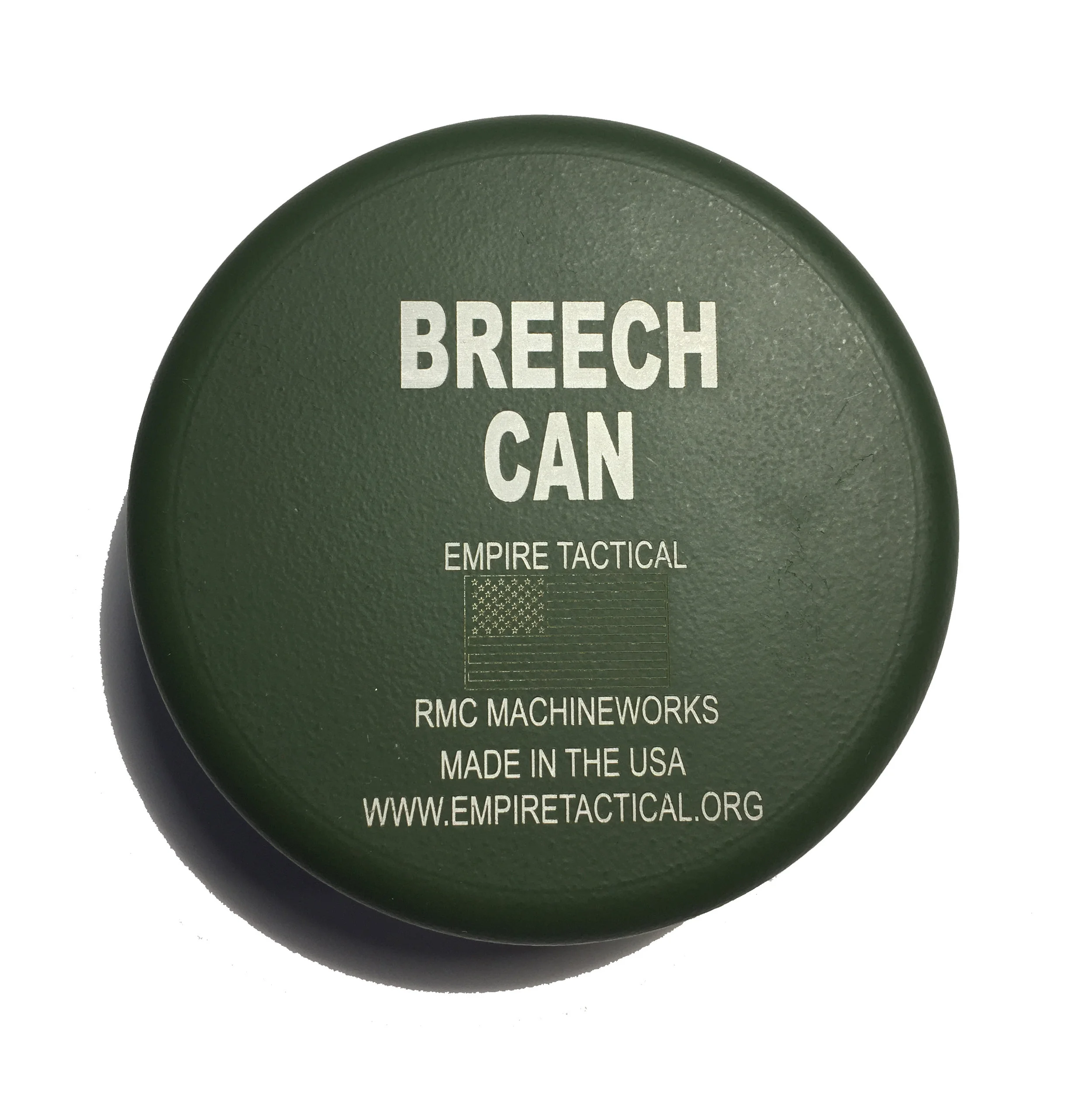THE BREECH CAN™ 100% American Made fashioned after an artillery breech (Choose style)
THE BREECH CAN™ 100% American Made fashioned after an artillery breech (Choose style)
An Interrupted screw - Precision CNC milled
Airtight/Waterproof Can
Allow 3-5 days for shipping due to popularity
4.3oz weight
Crafted from 6061-T6 Billet Aircraft Quality Aluminum
1. Fits a can a dip perfectly, just take the lid off and drop in - Or pour your dip into the can
2. Fashioned after the artillery breech- Interrupted screw
3. Only takes a quarter turn to close.
4. 100% CNC milled - made from Aluminum
5. Airtight and WATERPROOF- 100% made in the USA
6. Crush proof, Strong as nails - you can drive a truck over it.
7. 100% badass
An interrupted screw or interrupted thread is a mechanical device typically used in the breech of artillery guns. It is believed to have been invented in 1845.
It is a screw set into the breechblock that has a section of thread along its axis removed. The screw is mated with a partially threaded hole at the rear of the weapon's chamber: threadless channels in the breechblock screw line up with threadless channels in the breech, and vice versa. The screw can thus be smoothly inserted all the way into the gun, after which as little as one-sixth of a turn can engage the two sets of threads securely, sealing the breech. Interrupted screws are occasionally seen in loose gunpowder rifles, as this mechanism was historically one of the few practical ways to achieve a gas-proof seal with a breech-loading firearm that does not employ cartridges. An earlier method was the use of a wedge to block the rear of the gun.
Sealing was further improved with the de Bange obturator in 1872, and all interrupted screw breeches with this system were generally known as the De Bange type.
The major weakness of the original designs was that only half of the circumference of the breechblock could be threaded, hence a fairly long breechblock was still required to achieve a secure lock. Axel Welin solved this problem with his stepped interrupted screw design: the Welin breech block of 1890. This design has threads of the block and breech cut in steps of successively larger radius. For example, this allows a breechblock with four steps to allow four-fifths of the block circumference to be threaded, allowing for a much shorter breechblock while still requiring only one-fifth of a turn to open or close. This is the basic design still in use with bagged charge artillery.
With That said, this is an American made CNC machined masterpiece.
-Empire Tactical USA
Hello, World!















